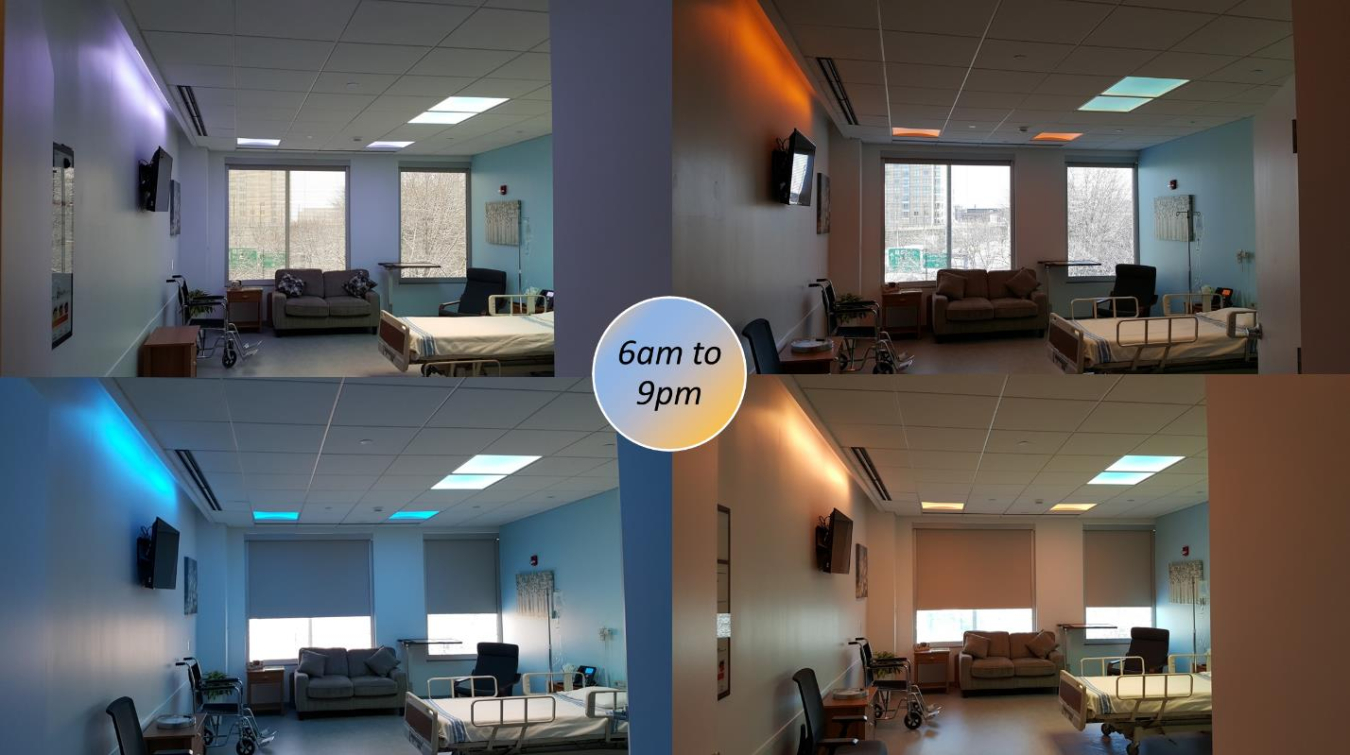
With the help of DOE funding, Philips Lighting Research North America has developed an innovative LED patient-suite lighting system that’s 40% more energy-efficient than traditional fluorescent incumbent technologies and meets all of the visual and non-visual needs of patients, caregivers, and visitors while improving the overall patient experience.
The system of more than 10 luminaires is comprised of state-of-the-art multichannel LED platforms and Power over Ethernet drivers, along with control technologies that provide spectral tuning and are part of an intelligent connected lighting system. Complex and nuanced software was written to set behaviors for a variety of lighting scenes in the patient suite throughout the course of a 24-hour day. All programs were designed to provide visual comfort for all occupants, enable critical task performance for staff, support patients’ circadian rhythms, and allow override via manual controls. In addition to spectral tuning, the system makes use of occupancy, daylight, and user controls, with intuitive user-control interfaces for patient, family, and caregivers.
Four independent color channels make it possible for the lighting system to produce a wide range of tunable-color and tunable-white combinations. When the system is operated in tunable-white mode, it provides CRIs ranging between 80 and 85, with CCTs that can be tuned from 2700K-6500K. The advanced controls enable the system to give patients and staff a very different lighting experience, not only adjusting the lighting intensity based on the availability of outside light from the windows when appropriate, but also adjusting the CCT of the luminaire located directly above the bed, and adjusting the color points of the luminaires located around the bed’s perimeter, over the course of the day. With all of this functionality combined into a complete solution, the lighting system uses 40% less energy compared to incumbent fluorescent systems.
At a full-scale mockup at Philips Lighting’s lab in Cambridge, MA, the lighting system was found to meet visual criteria as well as non-visual criteria. Additionally, human-factor evaluations were conducted with eight healthcare professionals, who represented a range of job functions. The overall response to the lighting system was positive, with requests to pilot it at multiple healthcare facilities in recognition of its energy efficiency and value to patient and staff well-being, and unanimous agreement that a tunable lighting system is desirable in a patient room.
The Philips Lighting Research team also partnered with Pacific Northwest National Laboratory to evaluate nursing and caregiver satisfaction with existing lighting systems. The team conducted surveys at four Pacific Northwest hospitals, with the 252 usable responses indicating that having high-quality lighting color for evaluating skin tones; having flexible and comprehensive lighting control for patients, visitors, and caregivers; reducing glare and flicker; and having the right amount of light in a uniform pattern that reduces shadows are all critical for patient-room lighting solutions. (August 2017)
Return to Research Highlights.
